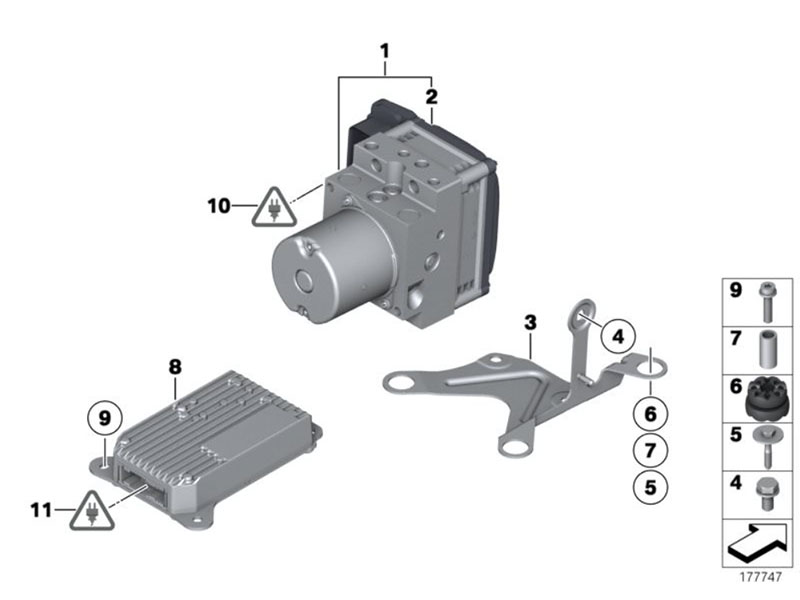The BMW ICM (Integrated Chassis Management) module is a crucial part of a vehicle’s control system. It manages the functionality of various systems such as headlights, steering, ride height control, ABS, and even the car’s infotainment system. A fault in the ICM module can cause multiple issues in the vehicle, impacting its performance and safety. This guide will provide an overview of what causes BMW ICM module faults, how to diagnose and fix them, and best practices for replacing and coding the module. This SEO-optimized content is targeted at workshop owners and automotive engineers.
What is a BMW ICM Module Fault?
The BMW ICM module fault occurs when the integrated chassis management system encounters issues that prevent it from performing its duties. Since the ICM is connected to multiple systems within the vehicle, any disruption or failure in the module can affect systems such as: Contact Here for Free Video Tutorial.
- Headlights: Faults in the ICM can lead to malfunctioning or non-operational headlights.
- Steering: A stiff steering wheel due to power steering issues may indicate an ICM fault.
- Ride Height Control: Malfunctions in ride height adjustment, especially in models with adaptive suspension.
- ABS (Anti-lock Braking System): Failure of the ABS system due to poor signal transmission.
- Electrical Systems: Low voltage to various control modules.
When the ICM fails, the BMW vehicle may experience erratic behavior, warning lights may illuminate, and crucial driving aids may stop working.
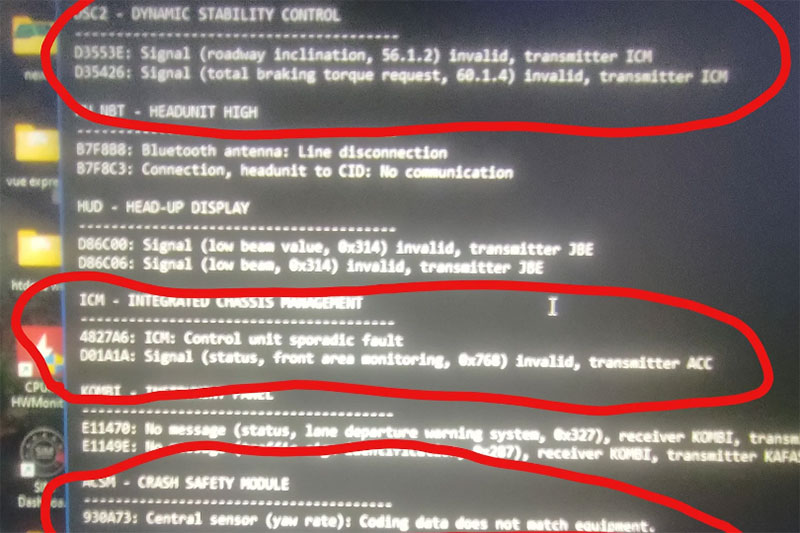
Common Causes of BMW ICM Module Faults
The ICM module is complex and connects to several systems in the vehicle, making it susceptible to faults for various reasons:
- Hardware Failures: Internal components like microchips or circuit boards can malfunction, leading to a complete ICM failure.
- Software Issues: Inaccurate software updates, improper coding, or faulty installations can corrupt the ICM module.
- Electrical Problems: Short circuits, voltage surges, or faulty wiring can damage the ICM, causing it to malfunction.
- Sensor Failures: Sensors feeding data to the ICM may become faulty or provide incorrect data, leading to system-wide errors.
- Connectivity Issues: Poor or disrupted connections between the ICM and other systems can lead to inconsistent performance or module failure.
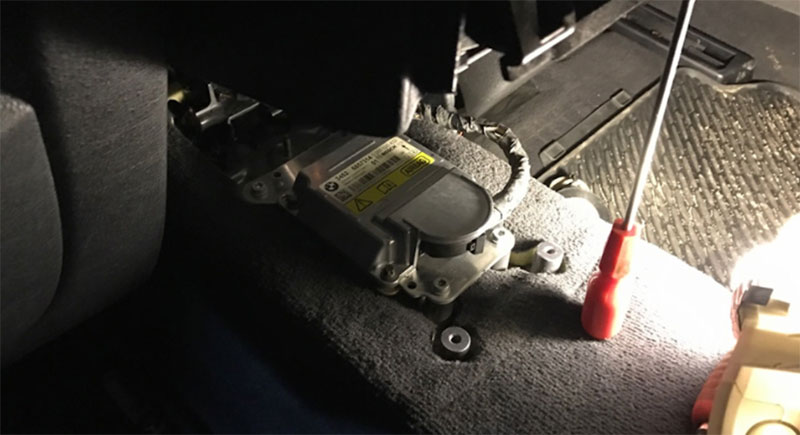
How to Fix BMW ICM Module Faults
When faced with a BMW ICM module fault, there are a few key repair and replacement methods:
- Replace the ICM Module:
The most straightforward fix is to replace the faulty ICM module. After replacement, it’s essential to encode and program the new module to work properly with the vehicle’s system. - Repair Wiring:
Faulty wiring could be the source of the problem. Ensure that all connections between the ICM module and other components (headlights, steering, ABS) are secure and free from damage. - Replace Other Faulty Control Modules:
Since the ICM is linked to other control systems, issues with those systems (such as the steering module or ride height control) can trigger ICM faults. Fixing or replacing these modules can restore functionality to the ICM. - Reprogram or Encode the ICM:
After replacing or repairing the ICM module, you must reprogram or encode the new module using specialized diagnostic tools. This ensures that the new module functions correctly with the vehicle’s specific systems.
Step-by-Step Guide to BMW ICM Fault Diagnosis and Repair
1. Diagnose the ICM Module Fault
Before attempting any repairs, run a diagnostic scan using professional tools like ISTA D or Esys to check for fault codes in the ICM module. Look out for common fault codes such as 4827EC ICM: control unit, internal fault.
- If the power steering is stiff, check for related ICM error codes.
- If the headlights are malfunctioning, verify whether the fault lies with the ICM or the headlight control module.
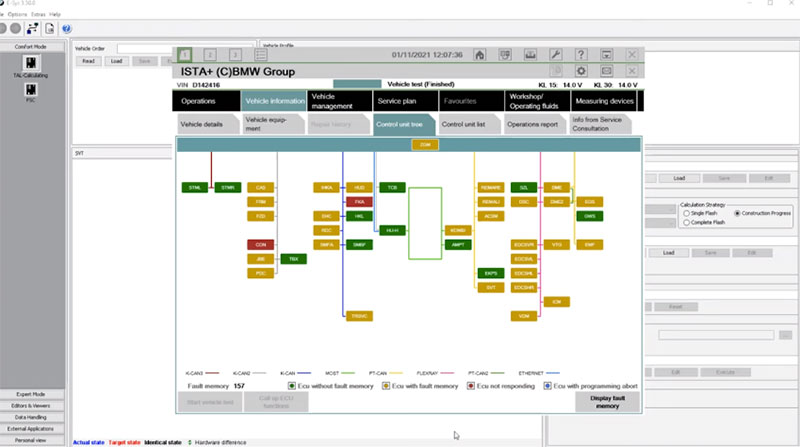
2. Replace or Repair Faulty ICM Module
Once the fault is identified as being within the ICM itself, proceed to replace it with a new unit. Before installation, ensure all connections are secure, and the vehicle is in a safe, stationary position.
3. Coding and Programming the New ICM Module
After installing the new ICM module, it must be encoded and programmed to synchronize with the car’s systems. The steps include:
- Software Requirements: Use ISTA D or Esys for F-series BMWs, or Ista P for E-series models.
- Hardware Requirements: You’ll need ICOM Next or ENET cable for connecting the diagnostic tools to the vehicle.
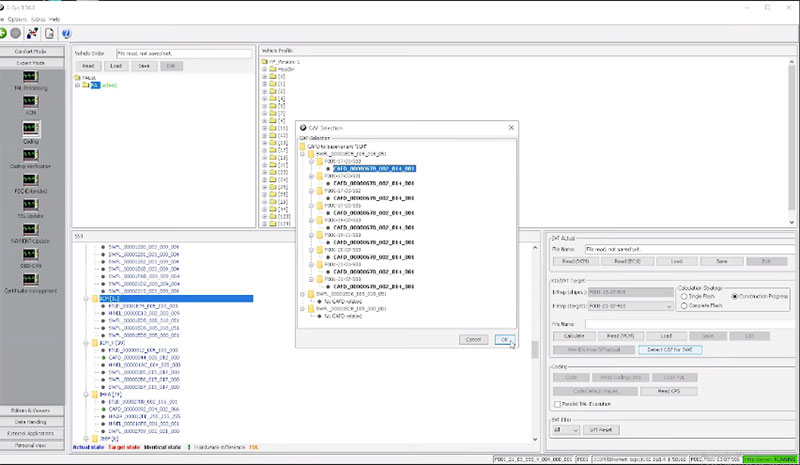
Steps to follow:
- Scan the Vehicle for Faults: Using the diagnostic tool, scan for existing faults and check if the ICM needs coding.
- Enter Coding Mode in Esys: Select the ICM control unit and update the CAFD file to match the project of the vehicle.
- Program the ICM: Complete the coding by adding the appropriate files, and then check the vehicle systems to confirm that the errors have cleared.
- Calibration: If certain systems are still showing errors, you may need to recalibrate them to ensure full functionality.
4. Testing and Final Checks
After coding the ICM, run a final diagnostic scan to verify that the module is functioning correctly. Test all the systems connected to the ICM, such as the headlights, ABS, and power steering, to confirm their operation.
Troubleshooting Specific ICM Module Faults
Headlights Not Working Correctly:
If the headlights are flickering or non-operational, check the ICM for any faults related to voltage regulation or control signals. If the ICM is faulty, replacing and reprogramming the module should resolve the issue.
Low Voltage Across Control Modules:
If a diagnostic scan reveals low voltage across multiple control modules, check the vehicle’s battery and alternator. If these components are functioning correctly, the fault likely lies within the ICM. After verifying this, reprogramming the ICM can restore normal voltage levels.
Q&A
Q: What happens if the BMW ICM module is not replaced after a fault?
A: If the ICM module is not replaced or repaired after a fault, several critical systems in the vehicle may stop functioning, including the headlights, power steering, and ABS. This can lead to safety hazards and overall vehicle malfunction.
Q: How long does it take to replace and program a BMW ICM module?
A: Replacing the ICM module typically takes 2-3 hours, including the time required for reprogramming. Coding the new module can take an additional 30-60 minutes, depending on the vehicle model and complexity.
Q: Can I continue to drive with an ICM fault?
A: While it is possible to drive with an ICM fault, it is not recommended as it may affect critical systems like steering, braking, and headlights, posing a safety risk.
Q: Is professional help necessary for replacing a BMW ICM module?
A: Yes, due to the complexity of the ICM module and its integration with various systems, professional assistance is highly recommended. At Cardiagtech, we offer remote support via TeamViewer or UltraViewer to assist with diagnostics, coding, and programming of BMW ICM modules.
Conclusion
The BMW ICM module plays a crucial role in managing the vehicle’s control systems. When an ICM fault occurs, it can disrupt multiple functions, from the headlights to the steering. By following the steps in this guide, you can diagnose, repair, and program the ICM module to restore full functionality to your BMW. For expert assistance or remote programming support, contact Cardiagtech via WhatsApp at +1 (641) 206-8880.


